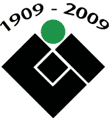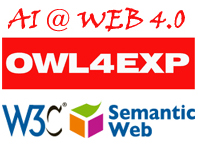Apollo 11 and Interoperability Semantic Web OWL4EXP
Apollo 11
Semantic Web for the Product Data Exchange: the space program base
and Interoperability...
from ISO-IEC 10303 to the Semantic Web and OWL4EXP
The Apollo Program was a human spaceflight program undertaken by NASA during the years 1961/1975 with the goal of conducting manned moon landing missions.
The program set major milestones in the history of human spaceflight as for Concurrent Engineering and Interoperability for its complex developping. Beening the foundamental for the STEP and EXPRESS of the ISO-IEC 10303 that with the nowadays use of the Semantic Web could be developped by the morphism OWL4EXP, using well known algorithm from the Artificial Intelligence (OWL4EXP is winner of the CEI Award Miglior Tesi - Comitato Elettrotecnico Italiano).
The program spurred advances in many areas of technology peripheral to rocketry and manned spaceflight. These include major contributions in the fields of avionics, telecommunications, and computers. The program sparked interest in many fields of engineering, including pioneering work using statistical methods to study the reliability of complex systems made from component parts. The physical facilities and machines which were necessary components of the manned spaceflight program remain as landmarks of civil, mechanical, and electrical engineering.
The information generated about a product during its design, manufacture, use, maintenance, and disposal is used for many purposes during that life cycle. The use may involve many computer systems, including some that may be located in different organizations. In order to support such uses, organizations need to be able to represent their product information in a common computer-interpretable form that is required to remain complete and consistent when exchanged among different computer systems.
Following the Apollo program both NASA and its major contractors had to developped Concurrent Engineering and Interoperabilty skills creating the foundations for the future international standards and the ISO-IEC 10303.
ISO-IEC 10303 is an International Standard for the computer-interpretable representation and exchange of product data. The objective is to provide a mechanism that is capable of describing product data throughout the life cycle of a product, independent from any particular system. The nature of this description makes it suitable not only for neutral file exchange, but also as a basis for implementing and sharing product databases, archiving and for CAD/CAM/CAE tools,
PDES, Inc. is government-industry consortium formed for the specific purpose of developing and implementing STEP/EXPRESS (ISO-IEC 10303). The consortium's computer lab and technical and administrative staff are located at SCRA in Charleston, SC. Member companies of PDES, Inc. include Boeing, Lockheed Martin, Northrup Grumman, Rockwell, British Aerospace, Ford, GM, Rolls Royce, and many others.
Every year a NASA-ESA Workshop on Product Data Exchange is held to bring together developers, implementers and users of product data exchange and data sharing solutions, and to share experience obtained in development, implementation, deployment and operational use.
To continue in building on the heritage of ten highly successful annual workshops, alternating between the US and Europe. Over the years the workshop scope has evolved from focusing on a number of ISO-IEC 10303 - STEP/EXPRESS (related) data exchange standards to a broad range of data exchange and data sharing technologies and standards that enable efficient and effective product life cycles (PLM) for complex systems and facilitate collaboration between organizations and disciplines.
The 11th NASA-ESA Workshop on Product Data Exchange was held at Boeing's Kent Space Center, 29 April - 1 May 2009
The work "Semantic technologies for industrial purposes" looks towards the interoperability problems for the computer science and
the computer mediated communication applied to the Concurrent Engineering,
introducing an innovative approach with the Semantic Web addressed by the
description data language on industrial products according with the international
standards ISO-IEC 10303.
The work "Semantic technologies for industrial purposes" won the CEI Award Best Thesis XIII edition for the three best Thesis, with a public recognition on CEI - Comitato Elettrotecnico Italiano.
• see Google for the Apollo 11 40th Anniversary: Celebrating the 'Giant Leap'
• see NASA - Apollo 11 40th Anniversary: Celebrating the 'Giant Leap'
• see NASA STEP Central
• see 11th NASA-ESA Workshop on Product Data Exchange
• see CEI - Comitato Elettrotecnico Italian - Press Release
• see CEI - Comitato Elettrotecnico Italian (Italian Electric Committee)
• see Politecnico di Milano - Computer Science Department - Press Release
• see Politecnico di Milano - Computer Science Department
• see Politecnico di Milano - Como Campus - Press Release
• see Politecnico di Milano - Como Campus
• see Politecnico di Milano - Faculty of Computer Science - Press Release
• see CEI Award Best Thesis, XIII edition - Italian Electric Committee
• see Semantic technologies for industrial purposes
• see My interactive video presentation
• see My slide presentation
» Press room
Main Areas...
contact:

CEI Award Best Thesis, XIII edition
Italian Electric Committee
1909 - 2009: 100 years next to you


